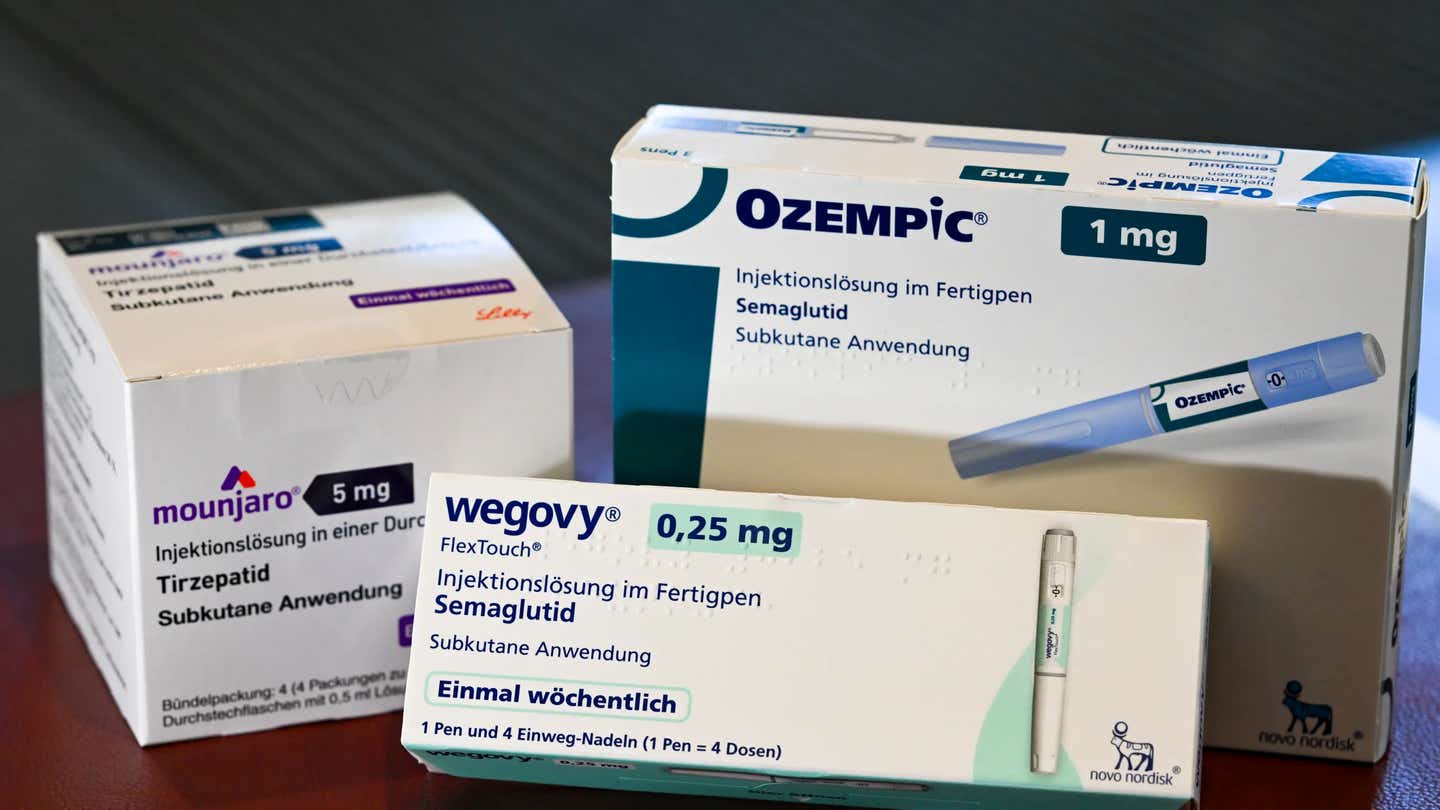Researchers reveal benefits, risks linked to popular weight-loss drugs
GLP-1 receptor agonists transform diabetes care, offering benefits to heart and brain health but posing risks to kidneys and pancreas

The benefits and risks of GLP-1 receptor agonists, including effects on brain, heart, and kidney health. (CREDIT: Getty Images)
Glucagon-like peptide 1 receptor agonists (GLP-1RAs) have rapidly emerged as game-changers in treating diabetes, heart disease, and obesity.
Commonly marketed under brand names like Ozempic and Wegovy, these medications are often hailed as "miracle drugs" for their transformative effects on weight loss and overall health. However, their impact on the body’s organ systems has remained an area of curiosity and concern.
A groundbreaking study by scientists at Washington University School of Medicine and the Veterans Affairs (VA) St. Louis Health Care System has shed light on the broader implications of GLP-1RA use.
By examining over 2 million medical records, researchers identified a spectrum of benefits and risks associated with these drugs, providing critical insights into their role in modern medicine.
A Systematic Analysis of Benefits
GLP-1RAs mimic naturally occurring hormones to regulate appetite and digestion. By promoting satiety and encouraging weight loss, they help manage obesity and related conditions. Yet, their influence extends far beyond metabolic health. Researchers have found significant associations between GLP-1RA use and improved neurological and behavioral outcomes.
For example, individuals taking these medications showed reduced risks of seizures, addiction, and self-harm. There were notable decreases in substance use disorders involving alcohol, cannabis, stimulants, and opioids. "These drugs act on brain receptors linked to impulse control and addiction, which may explain their effectiveness," said Dr. Ziyad Al-Aly, the study’s senior author.
Even more compelling are findings that link GLP-1RAs to a lower likelihood of developing neurocognitive disorders such as Alzheimer’s disease and dementia. Dr. Al-Aly explained, "By reducing inflammation in the brain and promoting weight loss, these medications may contribute to improved brain health."
Related Stories
The cardiovascular benefits of GLP-1RAs are also well-documented. The study confirmed these drugs reduce risks of heart attacks, strokes, and other cardiovascular events. While the magnitude of these benefits—a 10% to 20% reduction in many outcomes—is modest, the implications are profound for conditions with limited treatment options.
Mapping the Risks
Despite their many advantages, GLP-1RAs are not without risks. Gastrointestinal side effects, such as nausea, vomiting, and diarrhea, are among the most common complaints. In rare cases, these drugs can cause gastroparesis, a condition characterized by delayed stomach emptying.
The study also revealed new potential risks involving the pancreas and kidneys. GLP-1RAs were linked to an increased likelihood of pancreatitis and kidney conditions, which, though rare, can have serious consequences. Dr. Al-Aly emphasized the need for vigilance: "Physicians must monitor for signs of pancreatitis and assess kidney function in patients taking these medications."
The researchers analyzed 175 health outcomes using medical records from the VA’s extensive database, which includes patients of diverse ages, races, and sexes. They compared individuals using GLP-1RAs with those on more traditional antihyperglycemics, such as sulfonylureas, DPP-4 inhibitors, and SGLT2 inhibitors.
The results painted a complex picture of GLP-1RAs’ impact. While the drugs significantly benefited cognitive, behavioral, and cardiovascular health, they also carried risks requiring careful management. "Our findings underscore the potential for wider applications of these medications while highlighting the importance of monitoring for adverse effects," Dr. Al-Aly noted.
Implications for Clinical Practice and Research
As the popularity of GLP-1RAs continues to soar, it becomes increasingly important to understand their comprehensive effects. The study’s systematic approach—building a detailed “atlas” of health outcomes—provides a framework for guiding clinical care and future research.
Dr. Al-Aly’s team emphasized that the modest benefits observed for many outcomes do not diminish the value of these drugs. Instead, they suggest that GLP-1RAs work best in combination with other interventions, such as lifestyle changes or complementary therapies. This nuanced understanding can help maximize the drugs’ therapeutic potential while mitigating risks.
GLP-1 receptor agonists have revolutionized the treatment of diabetes and obesity, offering significant benefits across multiple organ systems. However, their use comes with challenges that demand careful consideration.
By providing a comprehensive map of their effects, the recent study equips healthcare providers with the knowledge to make informed decisions, ensuring that these "miracle drugs" fulfill their promise while safeguarding patient well-being.
Note: Materials provided above by The Brighter Side of News. Content may be edited for style and length.
Like these kind of feel good stories? Get The Brighter Side of News' newsletter.
Rebecca Shavit
Science & Technology Journalist | Innovation Storyteller
Based in Los Angeles, Rebecca Shavit is a dedicated science and technology journalist who writes for The Brighter Side of News, an online publication committed to highlighting positive and transformative stories from around the world. With a passion for uncovering groundbreaking discoveries and innovations, she brings to light the scientific advancements shaping a better future. Her reporting spans a wide range of topics, from cutting-edge medical breakthroughs and artificial intelligence to green technology and space exploration. With a keen ability to translate complex concepts into engaging and accessible stories, she makes science and innovation relatable to a broad audience.



